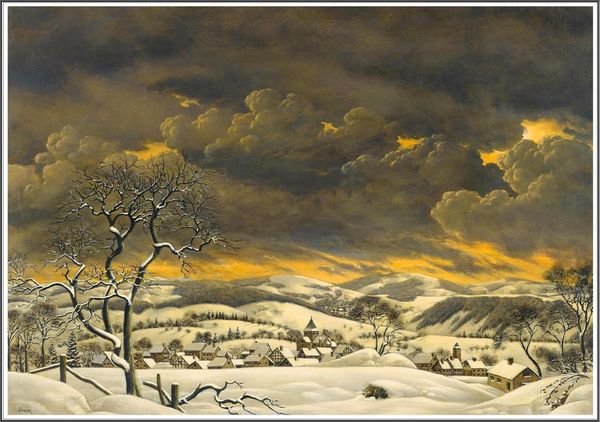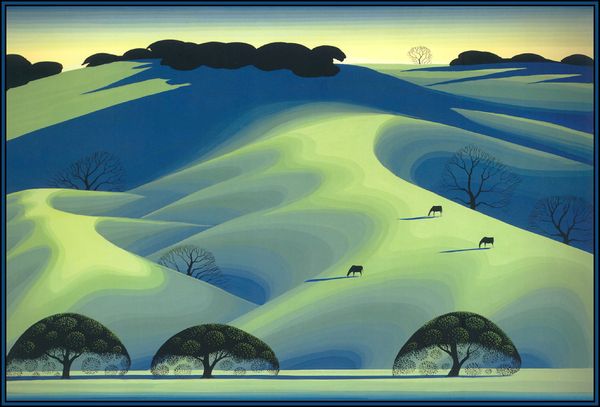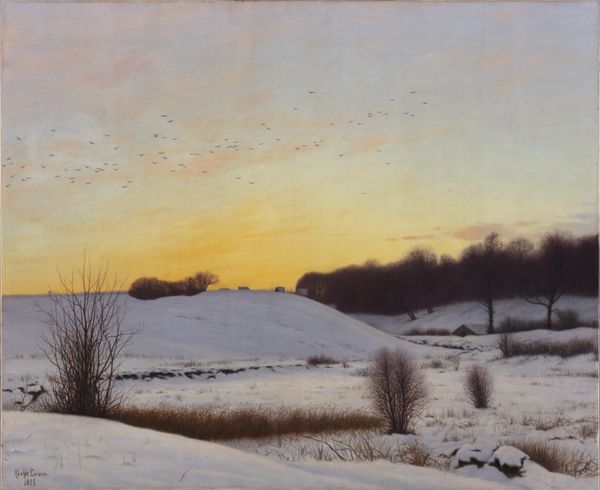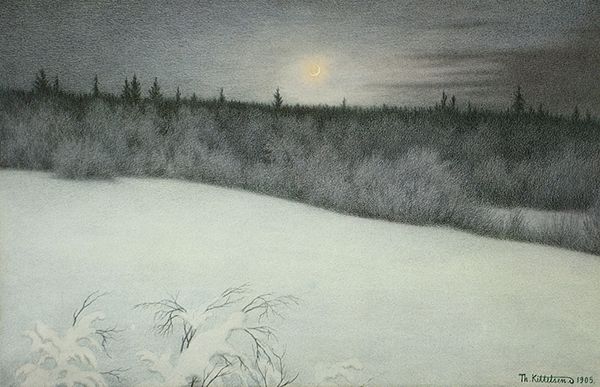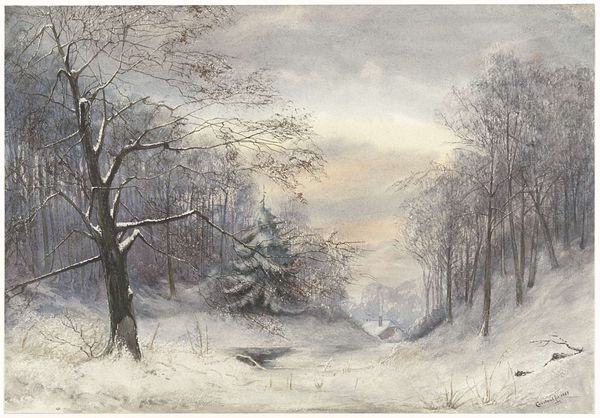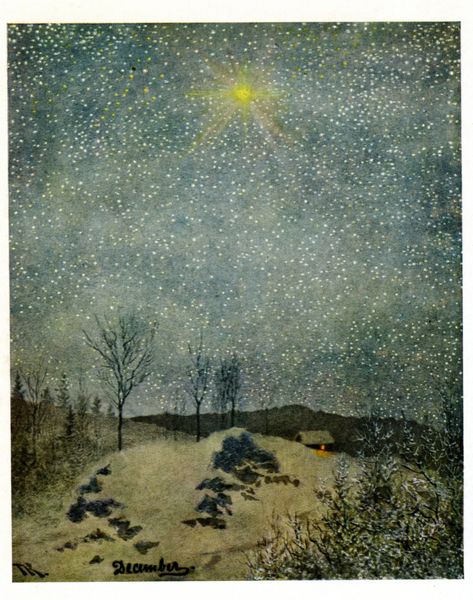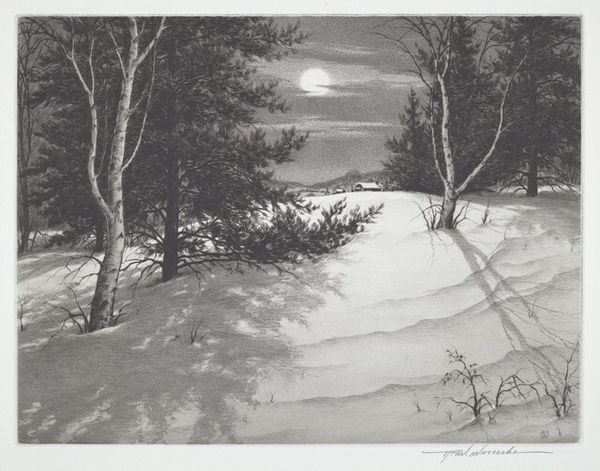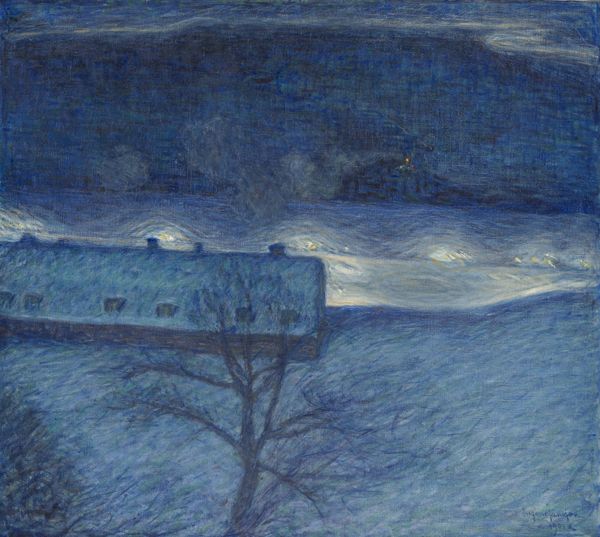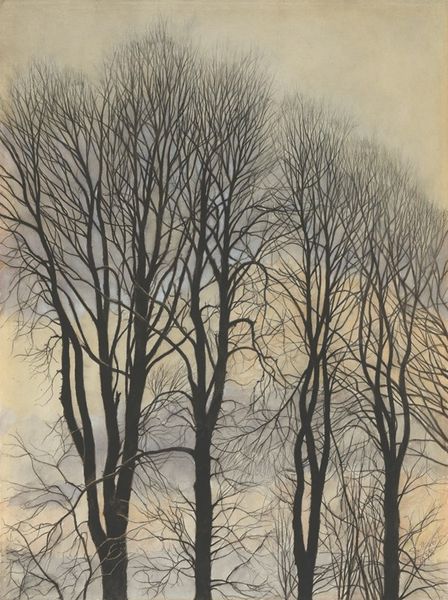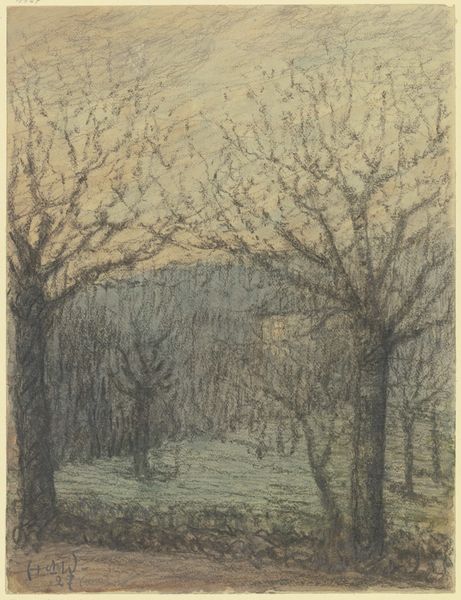
Dimensions: 11 7/8 x 15 3/16 in. (30.2 x 38.6 cm)
Copyright: Public Domain
Editor: This is Henry Farrer's "Winter Scene in Moonlight," painted in 1869, using tempera. There’s such a stark stillness to this winter landscape. What do you see in this piece, beyond the immediate representation? Curator: I see a visual poem reflecting the sociopolitical climate of post-Civil War America. The desolate landscape and cold palette mirror a nation grappling with loss and reconstruction, especially in regard to race and identity. Note the way the moon casts long, stark shadows. What power dynamics might be represented in this interplay of light and darkness? Editor: That's interesting; I hadn't considered the power dynamics. So the shadows aren’t just visual elements, but indicators of existing power structures at the time? Curator: Precisely. Consider how marginalized communities were often forced into the shadows, their stories obscured. Farrer's choice of a winter scene, a time of dormancy and apparent inactivity, could be read as a commentary on the suppressed voices and potential for future growth. What does the absence of people suggest to you? Editor: A sense of loneliness? Maybe even a kind of forced isolation? It seems that in a historical context, there are many ways in which such loneliness could be explained. Curator: And don’t forget the tradition of plein-air painting. Farrer stepping outdoors signals an act of witnessing, of bearing witness. His is a view rooted in an understanding of land ownership and historical narrative. Artmaking is an activist pursuit. Editor: That makes so much sense. I definitely see this piece differently now – not just as a landscape, but as a social commentary. Curator: Exactly! Looking closer allows us to rethink how we situate art and society together, and vice versa.
Comments
No comments
Be the first to comment and join the conversation on the ultimate creative platform.
